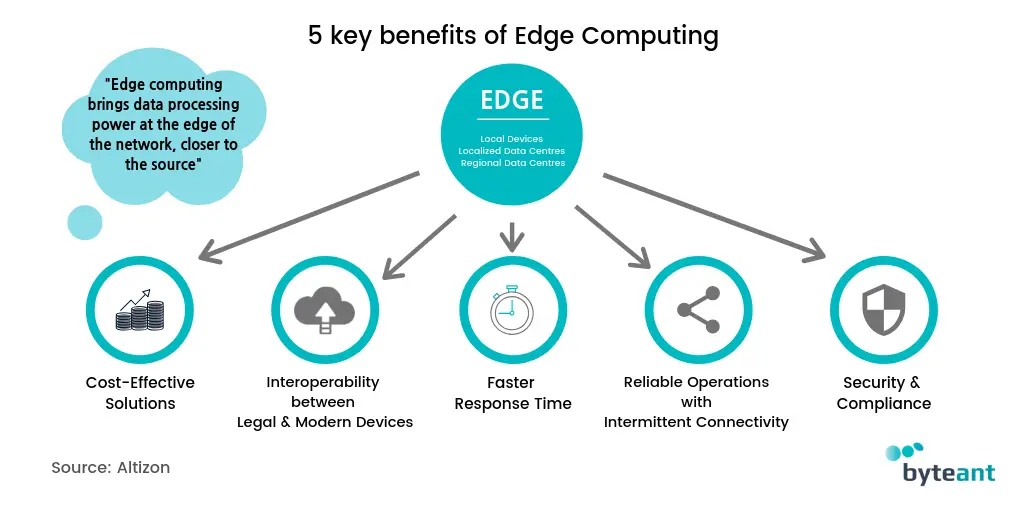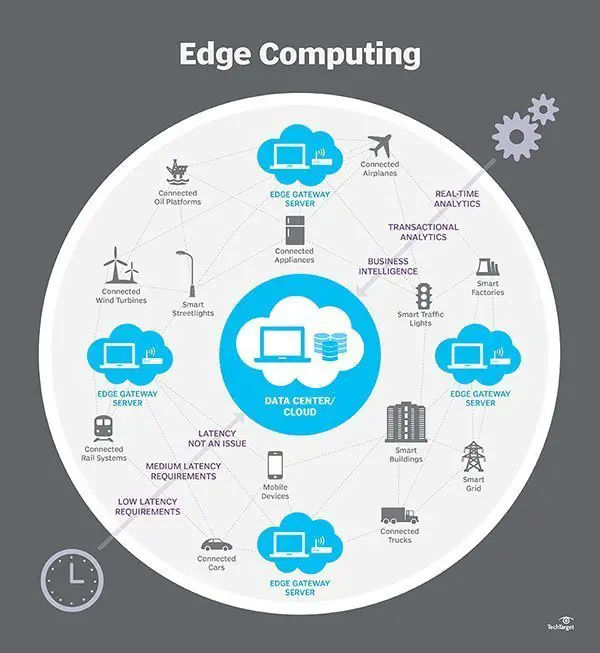Increased Content Availability and Reliability:

- Edge computing brings content closer to end users, reducing latency and improving content delivery efficiency.
- It mitigates the impact of network congestion and outages, ensuring uninterrupted content delivery.
Reduced Network Latency:

- Edge computing nodes are located at the network edge, minimizing the distance between content and users.
- This results in significantly reduced latency, providing a seamless user experience for video streaming, gaming, and other latency-sensitive applications.
Improved Quality of Service (QoS):

- Edge computing enables real-time monitoring and optimization of content delivery.
- It allows for dynamic allocation of resources to handle peak traffic and ensure consistent QoS, preventing buffering or pixelation.
Enhanced Security:
- Edge computing provides a distributed architecture, making it more resilient to cyberattacks.
- Content is stored and processed closer to end users, reducing the risk of data breaches and unauthorized access.
Optimized Resource Utilization:
- Edge computing enables caching of popular content at the edge, reducing load on central servers and optimizing network resource utilization.
- This results in cost savings and improved overall performance.
Support for Future Technologies:
- Edge computing provides a flexible and scalable platform for emerging technologies such as 5G, IoT, and augmented reality.
- It enables these technologies to leverage the benefits of reduced latency and increased content availability.
Additional Benefits Specific to CDN Environments:
Improved Offloading of Central Servers:
- Edge computing offloads content and processing tasks from central CDNs, freeing up resources for other operations.
Reduced Bandwidth Costs:
- By caching and delivering content closer to end users, edge computing reduces bandwidth consumption and costs for CDN providers.
Improved User Experience for Live Streaming:
- Edge computing enables the live streaming of high-quality video content with minimal latency and buffering, enhancing the user experience.
Enhanced Personalization:
- Edge computing facilitates the personalization of content delivery by localizing content and adapting it based on user preferences.## The Benefits Of Edge Computing In Cdn Environments
Executive Summary
Edge computing is a distributed computing paradigm that brings computation and data storage resources closer to the edge of the network, where data is generated and consumed. This approach has significant benefits for Content Delivery Networks (CDNs), enabling them to deliver content with lower latency, improved reliability, and enhanced security. By deploying edge servers in close proximity to end users, CDNs can significantly reduce the distance that data must travel, resulting in faster content delivery and a more seamless user experience.
Introduction
In today’s digital landscape, the demand for fast and reliable content delivery is higher than ever before. CDNs play a crucial role in meeting this demand by distributing content from multiple geographically dispersed servers, ensuring that users can access content quickly and efficiently regardless of their location. Edge computing takes this concept a step further by bringing computing and storage resources even closer to end users, unlocking a wide range of benefits for CDN environments.
FAQs
Q: What is the primary advantage of edge computing for CDNs?
A: Edge computing reduces the distance that data must travel, resulting in lower latency and faster content delivery.
Q: How does edge computing improve the reliability of CDN services?
A: By distributing content across multiple edge servers, edge computing provides redundancy and reduces the risk of outages, ensuring that content is always available to users.
Q: Can edge computing enhance the security of CDN environments?
A: Yes, edge computing can improve security by reducing the attack surface and providing real-time threat detection and mitigation capabilities closer to the edge of the network.
Top 5 Subtopics
Reduced Latency
Latency, the delay in data transmission, is a critical factor in user experience. Edge computing significantly reduces latency by bringing content and processing closer to the end user. By reducing the distance that data must travel, edge computing enables faster content loading, smoother video streaming, and improved overall responsiveness.
- Reduces the physical distance between users and content
- Eliminates network bottlenecks and congestion
- Enhances user experience for real-time applications
Enhanced Reliability
Reliability is essential for ensuring that content is always available to users. Edge computing improves reliability by distributing content across multiple geographically dispersed edge servers. In the event of an outage at one server, content can be seamlessly delivered from another server, ensuring uninterrupted service and a consistent user experience.
- Provides redundancy and failover capabilities
- Minimizes the impact of network fluctuations
- Maximizes uptime and availability of content
Improved Security
Security is a top priority for CDN providers. Edge computing enhances security by reducing the attack surface and providing real-time threat detection and mitigation capabilities closer to the edge of the network. By processing and storing data closer to the end user, edge computing reduces the risk of data breaches and malicious attacks.
- Reduces the exposure of sensitive data to external threats
- Provides real-time threat detection and prevention
- Enhances compliance with data privacy regulations
Increased Scalability
Scalability is essential for meeting the growing demand for content delivery. Edge computing enables CDNs to scale their services efficiently by distributing content across multiple edge servers. By adding or removing servers as needed, CDNs can quickly adapt to changing traffic patterns and ensure that content is always available to users, even during peak usage periods.
- Provides flexible and scalable infrastructure
- Enables rapid deployment of new services
- Reduces the cost of content delivery
Cost Optimization
Cost optimization is a key consideration for CDN providers. Edge computing can help reduce costs by reducing bandwidth usage and optimizing network utilization. By caching content closer to the end user, edge computing reduces the need for long-distance data transmission, resulting in lower bandwidth costs. Additionally, edge computing can optimize network utilization by reducing the load on core networks.
- Reduces bandwidth consumption and costs
- Optimizes network utilization and efficiency
- Provides cost-effective content delivery
Conclusion
Edge computing offers significant benefits for CDN environments, enabling CDNs to deliver content with lower latency, improved reliability, enhanced security, increased scalability, and cost optimization. By deploying edge servers closer to end users, CDNs can unlock a wide range of advantages, including faster content delivery, reduced outages, improved security, flexible scalability, and reduced costs. As the demand for fast and reliable content delivery continues to grow, edge computing is poised to play an increasingly important role in the future of CDN architectures.
Keyword Tags
- Edge computing
- CDN
- Content delivery
- Latency
- Reliability
- Security
- Scalability
- Cost optimization
